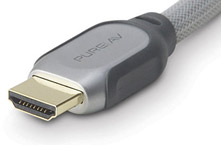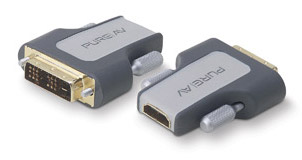Our Aim
To provide you with an overview on New And existing technologies, hopefully helping you understand the changes in the technology. Together with the overviews we hope to bring topical issues to light from a series of independent reviewers saving you the time And hassle of fact finding over the web.
We will over time provide you with quality content which you can browse and subscribe to at your leisure.
TekSpek 's

HDMI
Date issued:
What is HDMI?
HDMI stands for High-Definition Multimedia Interface, and it's an audio/video connector that's designed to be a digital successor to the multitude of analogue connectors already available - such as coaxial, composite, SCART and VGA to name but a few.
The 19-pin connector measures approximately 14mm in width and 4.5mm in height. Despite its relatively-small proportions, it's capable of delivering up to 10.2Gbit/s of bandwidth. That's enough to transmit uncompressed video at QSXGA (2,560x2,048) resolutions - comfortably higher than the 1080p (1,920x1,080) standard of most modern high-definition displays.

In addition to providing support for standard and high-definition video, a HDMI cable is also capable of simultaneously transmitting digital audio in up to eight channels. With a single cable allowing for 1080p high-def video and 7.1 digital audio, it's clear to see why the highly-regarded connector has become a standard in the majority of modern audio/visual equipment.
What else do I need to know?
As is common place with most audio/video connectors, HDMI itself has evolved over time. Having launched in 2003 at version 1.0, the HDMI specification has been improved over the years and is now available at version 1.3c. But what's the difference?
Each revision has brought with it increases in bandwidth and support for additional features. As a brief summary, HDMI 1.1 introduced support for DVD Audio, HDMI 1.2 added support for Super Audio CDs (SACDs) and improved PC connectivity. HDMI 1.3, launched in 2006, raised the available bandwidth to 10.2Gbit/s and added support for a variety of features synonymous with high-definition formats such as Blu-ray - these include Deep Colour, lossless audio via Dolby TrueHD and DTS-HD Master Audio, and automatic audio synchronisation.
Although the majority of specifications remain available in the market, the most up to date cables (HDMI 1.3c as of August 2008) will provide the latest functionality. Unfortunately, cables of the 1.3 specification tend to be a little pricier than cables of old. The end user will ultimately be required to determine if the increase in bandwidth and functionality is appropriate for the intended use.
What about backward compatibility?
PC users may often find that their graphics cards are equipped with DVI outputs, but what if you need to attach a HDMI display?
It sounds like a nightmare in the making, but it's anything but. HDMI is backward compatible with DVI, and a DVI source can therefore output to a HDMI monitor with no loss in video quality.
There are a few provisos, however. HDMI is backward compatible with DVI-D and DVI-I, but be aware that the compatibility doesn't extend to the analogue DVI-A connector. In addition, to connect a DVI source to a HDMI display, a HDMI-to-DVI adaptor or HDMI-to-DVI cable will be required. Last but not least, although a DVI source can provide video to a HDMI display, it won't be able to provide audio and may be without HDCP.

What is HDCP?
HDCP stands for High-bandwidth Digital Content Protection, and it allows for the encryption of data to prevent copying of content that's being transmitted via connectors such as HDMI.
Users should be aware that not all DVI devices provide support for HDCP, and a DVI-to-HDMI connection may prevent the user from playing back HDCP-protected content.
HDCP is most often put to use with copyrighted media found on formats such as DVD and Blu-ray Disc. Summary
In its five years since launch, HDMI has quickly established itself as the preferred digital successor to the assortment of analogue audio/videos connectors that previously set the standard. If you haven't already, don't be surprised to find HDMI inputs/outputs on the majority of your new audio/video electronics.